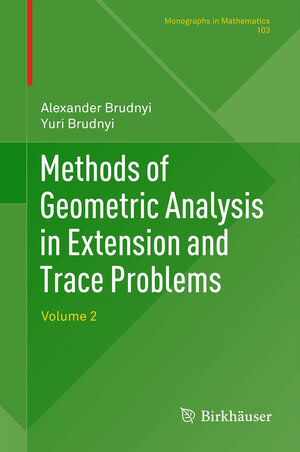
“Book under review is enormous in scope and contains most of the old and current results on extension problems. Many of the theorems appear here for the first time in book form. The book is self-contained, and the detailed arguments make it accessible to a wide audience, especially graduate students interested in getting into the subject. … It will become a standard reference in the subject, and it deserves a spot in the library.” (Garving K. Luli, Bulletin of the American Mathematical Society, Vol. 53 (1), January, 2016)
“The two-volume monograph is divided into ten chapters, with five chapters in each volume. … Volume II reports on the recent progress in the area of the extension and trace problems. … the book successfully conveys the authors’ coherent vision for the subject, with the emphasis on linear extension operators, finiteness properties, and the treatment of extension via selection. It is certain to become a standard reference in the field.” (Leonid V. Kovalev, Mathematical Reviews, Issue 2012 j)Methods of Geometric Analysis in Extension and Trace Problems
Volume 2
von Alexander Brudnyi und Prof. Yuri Brudnyi Technion R&D Foundation LtdThe book presents a comprehensive exposition of extension results for maps between different geometric objects and of extension-trace results for smooth functions on subsets with no a priori differential structure (Whitney problems). The account covers development of the area from the initial classical works of the first half of the 20th century to the flourishing period of the last decade. Seemingly very specific these problems have been from the very beginning a powerful source of ideas, concepts and methods that essentially influenced and in some cases even transformed considerable areas of analysis. Aside from the material linked by the aforementioned problems the book also is unified by geometric analysis approach used in the proofs of basic results. This requires a variety of geometric tools from convex and combinatorial geometry to geometry of metric space theory to Riemannian and coarse geometry and more. The necessary facts are presented mostly with detailed proofs to make thebook accessible to a wide audience.






